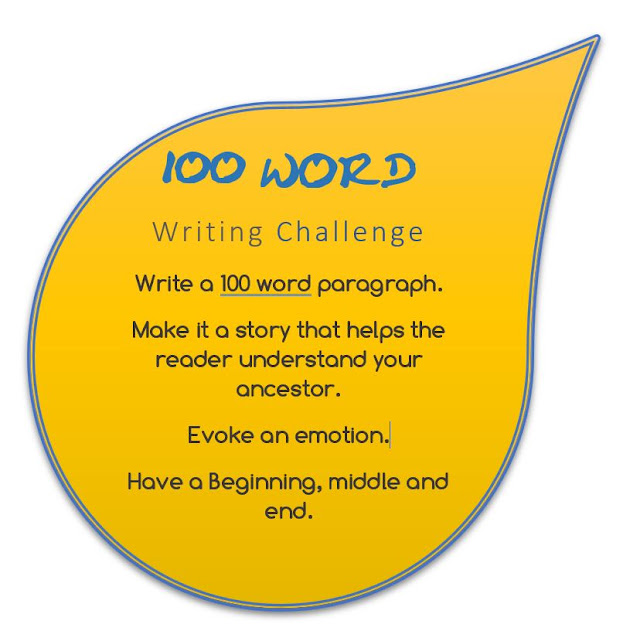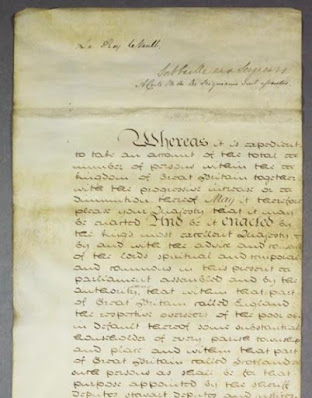My writing is improving ( I Hope!)
Thanks to the Uni of Tasmania Writing Family History course I think my writing is improving! It's a great course and I recommend it to anyone interested in Genealogy. It broadens the mind and ability. If you are up for a challenge... read on.
Now instead of starting with Joe was born in.... You may find my posts under Family Stories beginning with much more atmospheric and interesting scenes.
Here are some resources you might find interesting and helpful if you are starting to write your own family history;
Lisa Alzo - a power point presentation.
About.com - good advice on how to focus your story.
Genealogy.com - tips on how to grab the reader
writerswrite.com - an article written by Hazel Edwards about non-boring family history writing. (Hazel wrote my son's childhood all time favourite book - There's a Hippopotamus on my Roof Eating Cake!).
Creative Non Fiction.org - tips on how to bring history into your family history writing
Professional writing academy.com - courses on writing your family history.
Family Tree.com - some great tips here.
Olive tree blog - Write an ancestor tribute.
Lark turn the hearts blog - 1 hour writing challenge, an excellent way to begin.
Writing Narratives - one of the many power point presentations on this site, do some searching ("writing family history") to find more.
Good luck everyone.!
Now instead of starting with Joe was born in.... You may find my posts under Family Stories beginning with much more atmospheric and interesting scenes.
Here are some resources you might find interesting and helpful if you are starting to write your own family history;
Lisa Alzo - a power point presentation.
About.com - good advice on how to focus your story.
Genealogy.com - tips on how to grab the reader
writerswrite.com - an article written by Hazel Edwards about non-boring family history writing. (Hazel wrote my son's childhood all time favourite book - There's a Hippopotamus on my Roof Eating Cake!).
Creative Non Fiction.org - tips on how to bring history into your family history writing
Professional writing academy.com - courses on writing your family history.
Family Tree.com - some great tips here.
Olive tree blog - Write an ancestor tribute.
Lark turn the hearts blog - 1 hour writing challenge, an excellent way to begin.
Writing Narratives - one of the many power point presentations on this site, do some searching ("writing family history") to find more.
Here are my top tips:
- Write a story not a collection of facts. Find the stories within your ancestors life, what was interesting about them? What do the names and dates you have tell you?
- Ancestors are characters in your story, describe them, how they may have felt, and what life was like for them back when they were alive. How did they learn their trade? What were the turning points in their life? The aim is to bring your ancestor to life.
- and the locations they lived in are too. You can find lots of information about a place from Google images. Just search the place and a date, you will often find paintings that give you clues to what a place looked like. Describing what the old post office looked like when an ancestor went to post a letter back home is more interesting than saying the wrote home.
- Catch the reader in the first paragraph. Your first paragraph should not be "..was born in 1814". Find that little fact that interests you about your ancestor, or the place or time they lived in and write about that as the lead to your story. You do not have to resolve the whole story in this paragraph, but get the reader thinking about how your ancestor got there, or what happens next. Imagine you have met someone for the first time, what would you tell them about your ancestor? Not the date they were born, but probably some other little fact that gives them a clue.
- Link history to your ancestors. What was happening that influenced your ancestors? Why did they immigrate? What was the weather like on the day they married?
- Edit and Edit again. Perhaps this should be the number one tip! Sometimes another point of view is helpful in editing. Your first attempt is rarely the final one, editing is part of the process. Don't take it personally.
Good luck everyone.!



Comments
Post a Comment
Thank you for your comment on my Blog. I love to get feedback and information to share from my readers.
To keep up to date simply follow me on facebook or subscribe using the button at the top of the blog page.
Barb